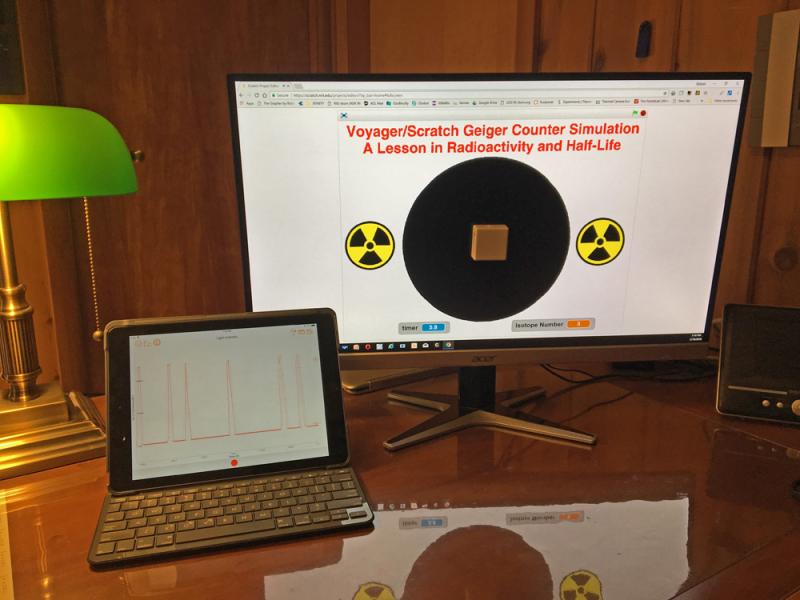This lesson makes it possible for your students to study radioactive decay and half-life concepts without the need to purchase expensive radiation monitors and actual radioactive isotopes. Scratch and Voyager work together to accomplish this via a simulation that matches that of true radioactive decay. ScratchX is not required, but may be used. The Scratch program provides the decay process. With each decay of a simulated atom, the Scratch screen quickly flashes white and emits a beep sound similar to that of a typical Geiger counter. Voyager’s light sensor records each of the decays as a “blip” in the light intensity versus time graph. A detailed analysis of this graph allows students to determine the half-life of one of four different isotopes that can be simulated by the Scratch program. Half-lives of the four isotopes range from approximately 75 to 240 seconds. The teacher can assign a specific isotope from the four to each student group. A video accompanies this lesson.
Students can assume that the background radiation is negligible as the Scratch program RadioactiveDecay.sb2 included with this lesson does not produce any background counts. There is also a Scratch program RadioactiveDecayWithBackground.sb2 with which students can study the effect of background radiation on the measured half-life.

